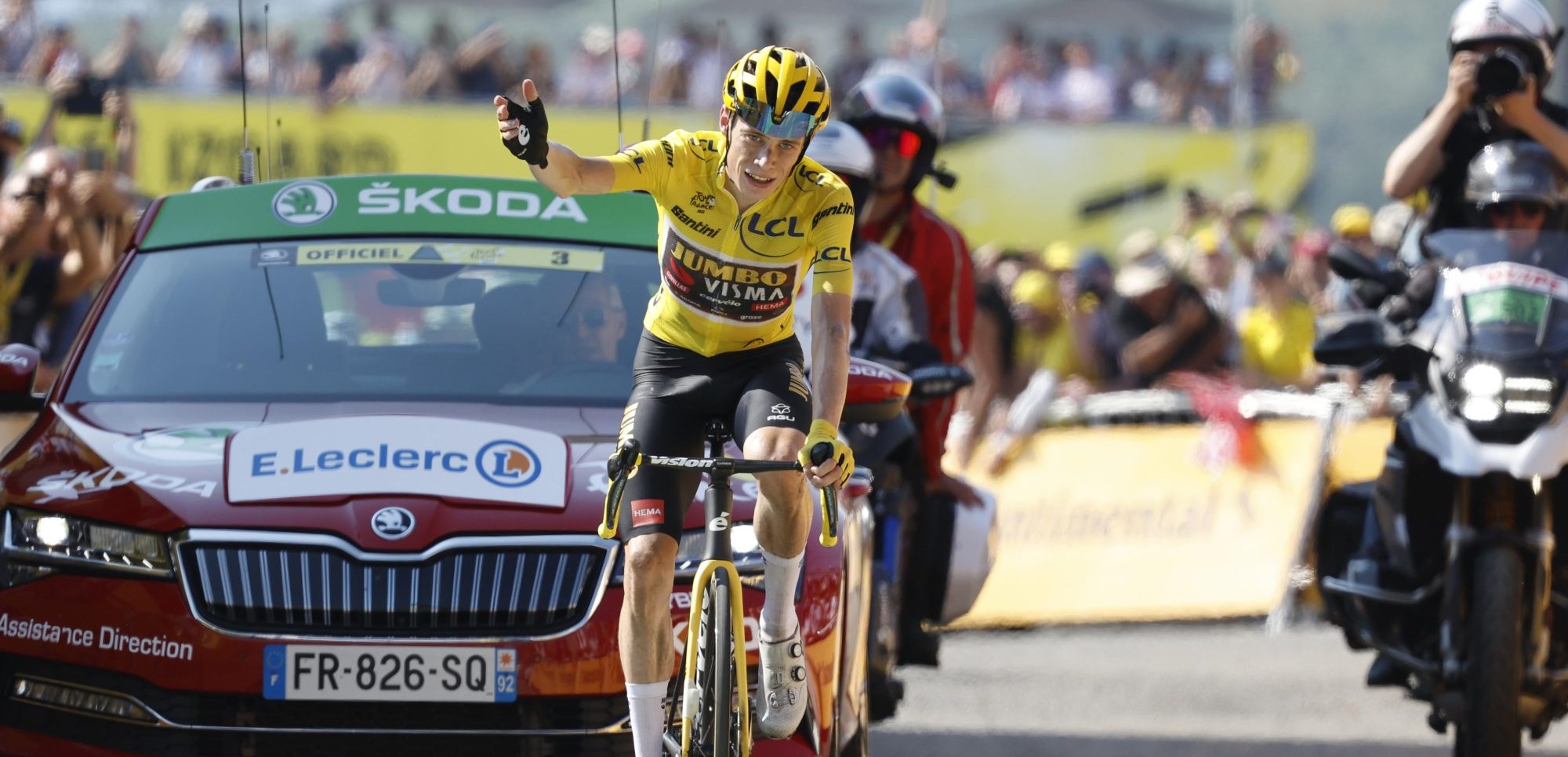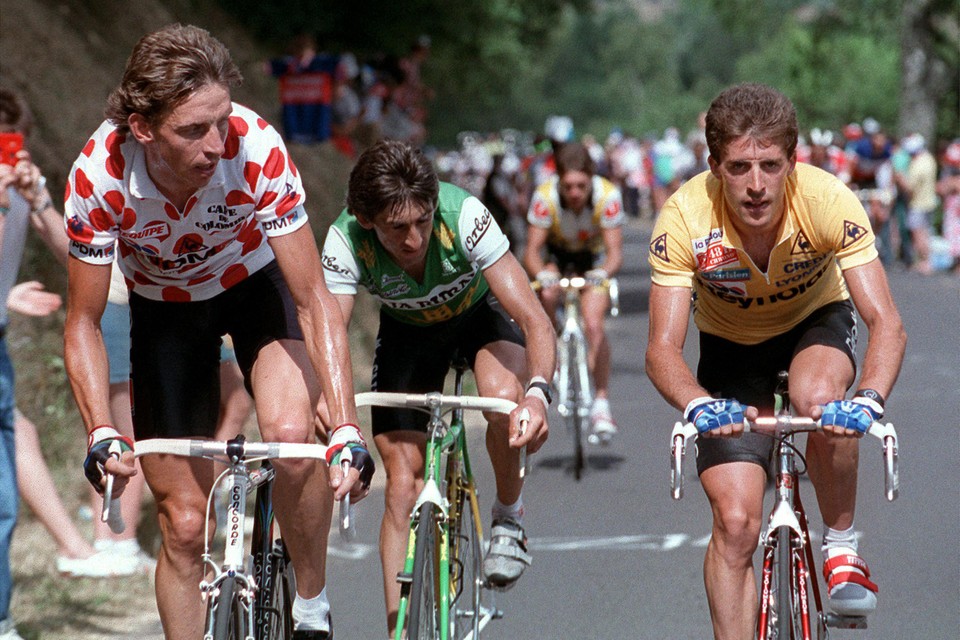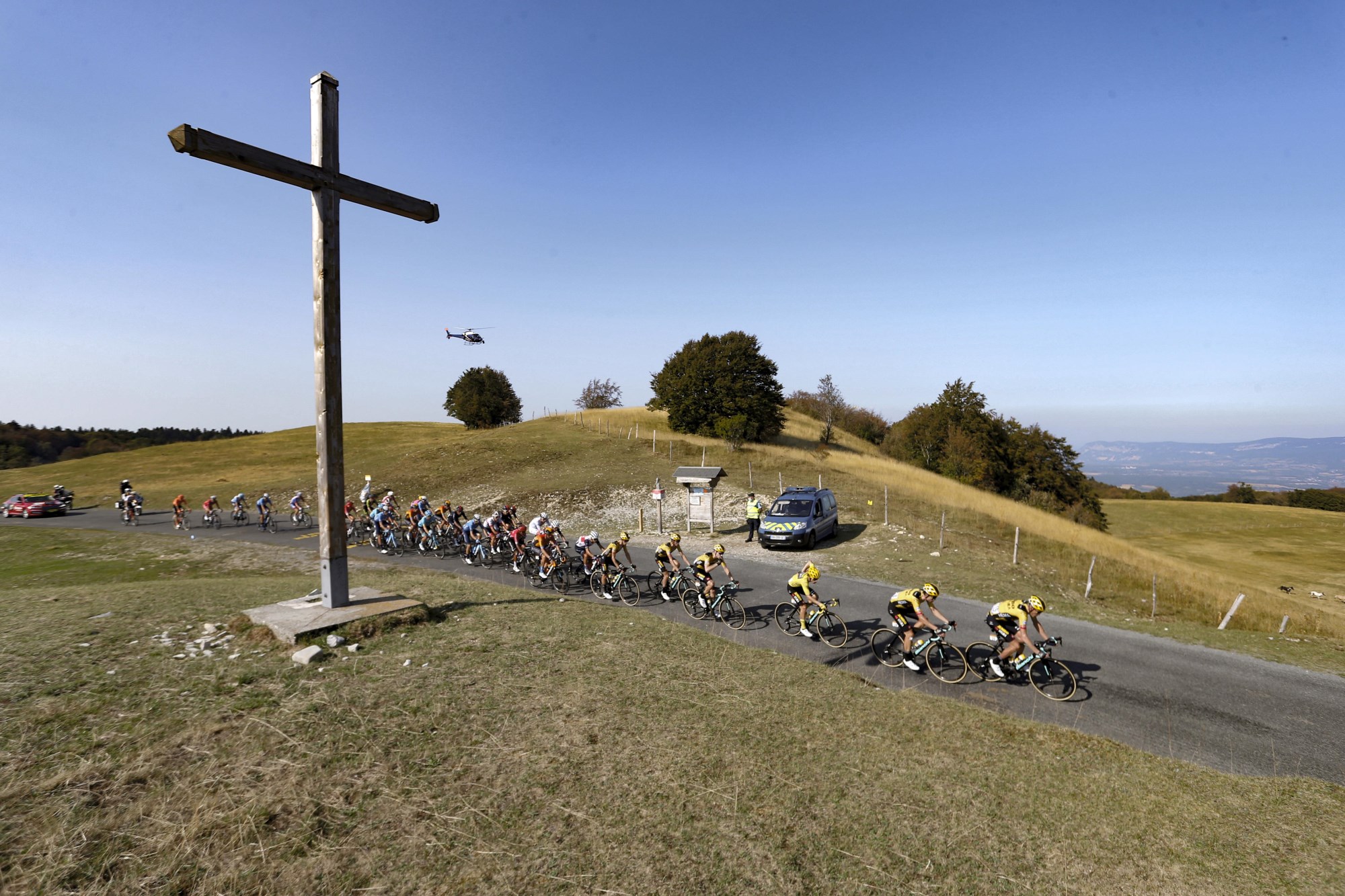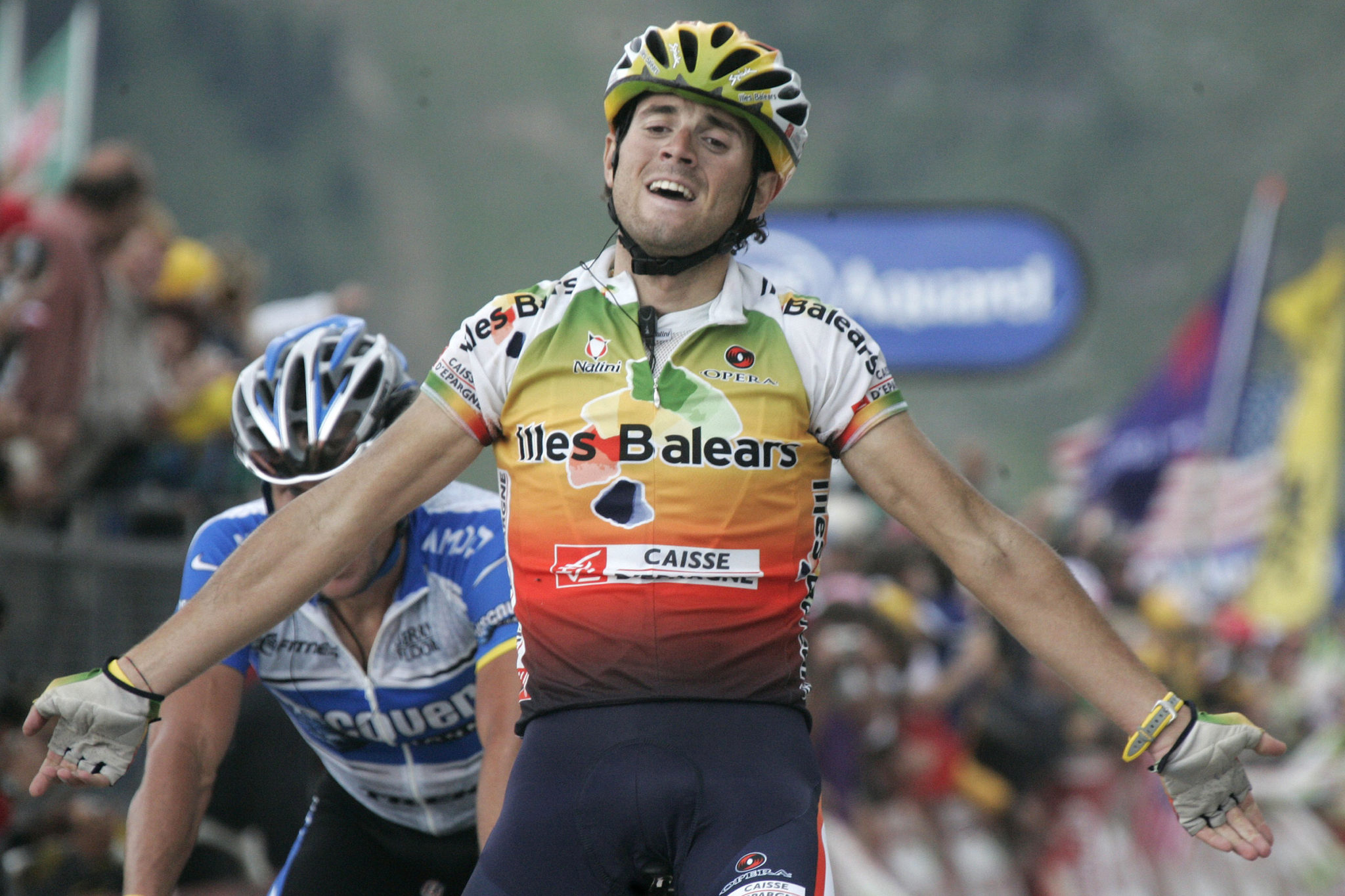Organiser ASO presented the full route of the 2023 Tour de France in Paris on Thursday. The 110th edition of the French Tour will start next year on Saturday 1 July in Bilbao, Spain, and finish three weeks later, in keeping with tradition, on Sunday 23 July in the French capital Paris. Cycling-Classics.com is presenting the route Tour de France 2023!

Highlights Route Tour de France 2023
The 2023 Tour de France will start outside French borders for the second year in a row
It will be the first time since 1992 that the Tour circus will start in Spain again. Back then, the Tour started in San Sebastián
This time, the Tour pays a visit to the Pyrenees at a very early stage
The ascent of the Puy de Dôme is back on the Tour route for the first time since 1988
Organisers have included four uphill arrivals in the route
30 cols of outer category, first category or second category
Roof of the Tour: Col de la Loze (2,304 metres)
2 countries, 8 regions
Eight mountain stages
Eight sprint stages
Four transition stages
One time trial of 22 kilometres
The organisers have scheduled two rest days, on 10 and 17 July
Detailed overview route Tour de France 2023
The 2023 Tour de France will start outside France’s borders for the second year in a row. After Denmark hosted the Grand Départ in 2022, in 2023 the main stage race of the year will start in Spain. Indeed, the cycling-mad region of the Basque Country will be the place to be for the first Tour stages. The region has been allocated three starts and two arrivals by organiser ASO.
Basque opener
Unlike in 2022, the 2023 Tour de France will again start with a stage in line. The venue will be Bilbao, where the first yellow jersey will also be awarded. It is the first time since 1992 that the Tour circus will start in Spain. Back then, the Tour started in San Sebastián with a prologue and a stage-in-line, won by Miguel Induraín and Dominique Arnould respectively.
The 182-kilometre opening stage has its centre of gravity in the last 50 kilometres. Several climbs – with Côte de Pike as the highlight – are included there. The second Tour stage covers 209 kilometres from Vitoria-Gasteiz to San Sebastián. The stage takes the Tour peloton through the provinces of Biscay and Alava. During this stage, the riders will face, among others, the legendary Jaizkibel.
Climbs on the way to Laruns and Cauterets
The third and final stage in the Basque Country starts in Amorebieta and heads along the Basque coast, through San Sebastián, towards the French part of the Basque Country. In Bayonne, the riders will finish after a mostly flat stage: in other words, we can expect a first sprint between the fast men here. The sprinters, by the way, will be the poor relation in the first week of the Tour, as the fourth and fifth stages will be climbing again.
The Tour pays an early visit to the Pyrenees this time with arrivals in Laruns, in the far south of France close to the Spanish border, and ski resort Cauterets. Two years ago, the Tour also opted for a stopover in Laruns. Later overall winner Tadej Pogačar won a sprint from a five-member elite group there, after a true spectacle through the Pyrenees. For the last Tour passage to Cauterets, we have to go back to 2015: Rafał Majka won then from an early breakaway.
The Puy de Dôme, back from (very long) away
After some feats of strength in the Pyrenees, it is time for some transitional stages. The round then continues with stages to Tour city Bordeaux (a place inextricably linked to Rob Harmeling, who managed to win a Tour stage there in 1992) and Limoges.
The climbers, however, are mainly thinking about stage nine, which finishes on a very special climb: the Puy de Dôme. This is a large lava dome and one of the youngest volcanoes in the Massif Central in Auvergne, the central-southern part of France, with an altitude of 1464 metres. It has a rich and infamous history in the Tour de France. Just think of the duel between Jacques Anquetil and Raymond Poulidor in the 1964 Tour, or the gut-wrenching defeat Eddy Merckx suffered there in 1975.
The mountain was included in the route 13 times, but the extinct volcano was visited for the last time in 1988. The Puy de Dôme is only accessible from one side and it is also very narrow towards the summit, which is far from ideal for the ever-growing Tour circus. However, Tour boss Christian Prudhomme is also a cycling romantic and so the Puy de Dôme will make its return to the Tour after 35 years. In the last four leaden kilometres, though, no spectators will be allowed.

A leaden exercise through the Alps
At the summit of the Puy de Dôme, the Tour will take a break, as it is time for a well-deserved rest day after nine stages. The riders will have the opportunity to blow off some steam, and recharge mentally and physically for the second Tour week. We start with three treacherous transition stages in the south of France, not far from the Alps. En route to Issoire, Moulins and Belleville-en-Beaujolais, several cycling stories could be written.
The classification riders should certainly be on their guard too, but they will be looking forward to four very tough and undoubtedly decisive Alpine stages in particular. The first stage through the famous mountains leads to the summit of the Grand Colombier. This is a climb we know mainly as the high road in the Tour de l’Ain, but for the last Tour passage we also only have to go back in time two years. In 2020, Tadej Pogačar was too strong for his compatriot Primož Roglič and Australian Richie Porte in an elite sprint.

The second Alpine stage takes riders from Annemasse to ski resort Morzine. True cycling connoisseurs will know by then what time it is. Whoever says Morzine also quickly says the Col de Joux-Plane. This just under 11 kilometres long Alpine col, at an average of over 8%, is one of the toughest climbs in the Alps and scares riders quite a bit. Richie Porte once called it “a nightmare of a climb”.
The col was first included in the Tour de France in 1978 and subsequently returned to the course 11 more times, invariably followed by the lightning-fast descent to Morzine. Peter Winnen finished first there once in 1982, but it was also, for example, where Lance Armstrong (in the 2000 Tour) had perhaps his toughest day in the Tour de France.
In stage 15, the Tour caravan heads for the final climb towards the ski resort of Saint-Gervais Mont-Blanc, on the flanks of Mont-Blanc. The finale is very similar to the Tour’s final passage to Saint-Gervais Mont-Blanc in 2016. Romain Bardet then managed to win the stage after a fine solo.
After the second and immediately last rest day, the remaining riders start the gruelling final week. The devil is not in the tail this time, because in stages sixteen and seventeen there are two real key stages. The 16th stage is a 22-kilometre ride against the clock between Passy and Combloux. The organisers have very little compassion for the riders this year, as the 17th stage also features some serious Alpine giants.
The final day through the Alps leads to the final climb towards the ski resort of Courchevel, where Richard Virenque (1997), the late Marco Pantani (2000) and Alejandro Valverde (2005) have triumphed in the past. This classic Alpine stage over several tough cols – including the Cormet de Roseland – will once again separate the remaining chaff from the wheat.

A final upheaval in the Vosges?
After the final Alpine stage to Courchevel, there will be time to catch one’s breath, although of course this is relative in a race like the Tour de France. Not much will normally happen in the transition/sprinters’ stage to Bourg-en-Bresse; the stage to Poligny is also for the fast men. On the last Saturday of the Tour, the organisers will unpack with a very last mountain stage. This time it is the Vosges’ turn and the Petit Ballon and the Col du Platzerwasel, among others, are on the menu.
On the flanks of the Platzerwasel, the battle for the overall victory and the other places of honour will be decided. Whoever holds the yellow jersey on Saturday afternoon will be crowned overall winner in Paris a day later. The Tour de France will again have its traditional final stage to Paris next year, with a sprint on the Champs-Élysees to conclude.
Route Tour de France 2023 – overview stages Tour 2023
Stages Tour de France 2023
01/07 – Stage 1: Bilbao – flag-es Bilbao (182 km)
02/07 – Stage 2: Vitoria-Gasteiz – San Sebastián (209 km)
03/07 – Stage 3: Amorebieta – Bayonne (185km)
04/07 – Stage 4: Dax – Nogaro (182km)
05/07 – Stage 5: Pau – Laruns (165km)
06/07 – Stage 6: Tarbes – Cauterets Cambasque (145km)
07/07 – Stage 7: Mont-de-Marsan – Bordeaux (170km)
08/07 – Stage 8: Libourne – Limoges (201km)
09/07 – Stage 9: Saint-Leonard-de-Noblat – Puy de Dôme (184km)
10/07 – Rest day
11/07 – Stage 10: Vulcania – Issoire (167km)
12/07 – Stage 11: Clermont-Ferrand – Moulins (180km)
13/07 – Stage 12: Roanne – Belleville-en-Beaujolais
14/07 – Stage 13: Châtillon-sur-Chalaronne – Grand Colombier (138km)
15/07 – Stage 14: Annemasse – Morzine (152km)
16/07 – Stage 15: Les Gets – Saint-Gervais Mont-Blanc (180km)
17/07 – Rest day
18/07 – Stage 16: Passy – Combloux (22km, ITT)
19/07 – Stage 17: Saint-Gervais Mont-Blanc – Courchevel (166km)
20/07 – Stage 18: Moûtiers – Bourg-en-Bresse (186km)
21/07 – Stage 19: Moirans-en-Montagne – Poligny (173km)
22/07 – Stage 20: Belfort – Le Markstein Fellering (133km)
23/07 – Stage 21: Vélodrome National de Saint-Quentin-en-Yvelines – Paris (115km)